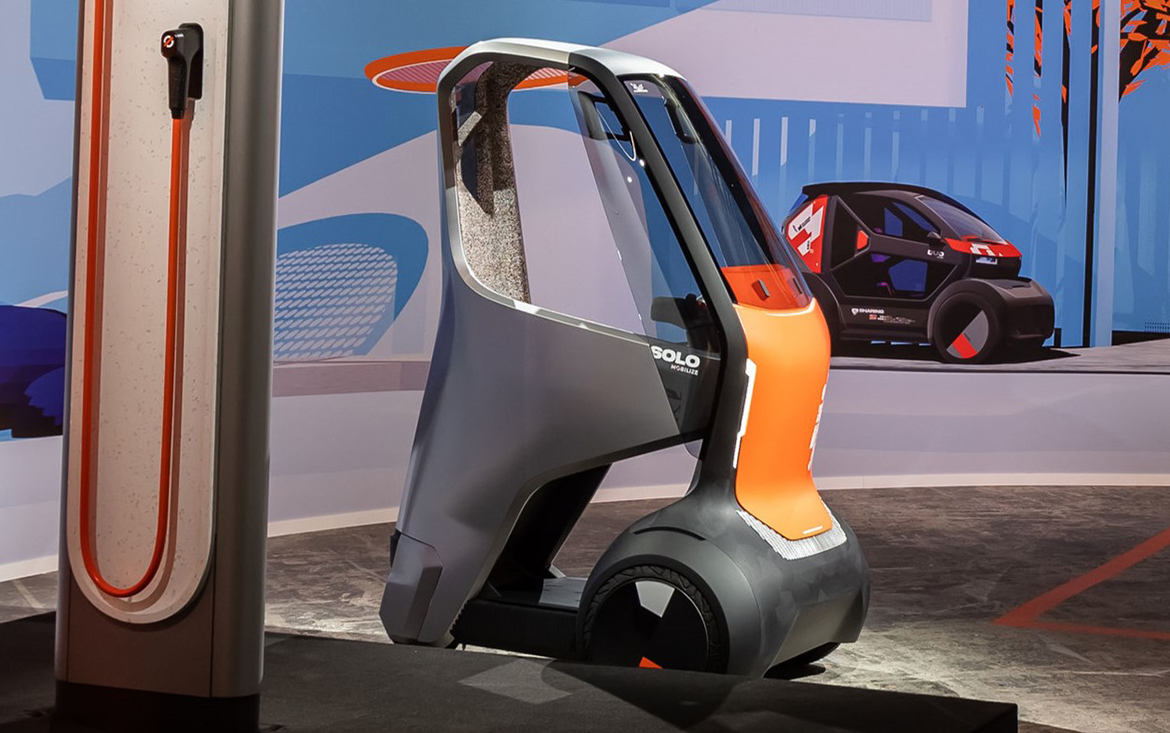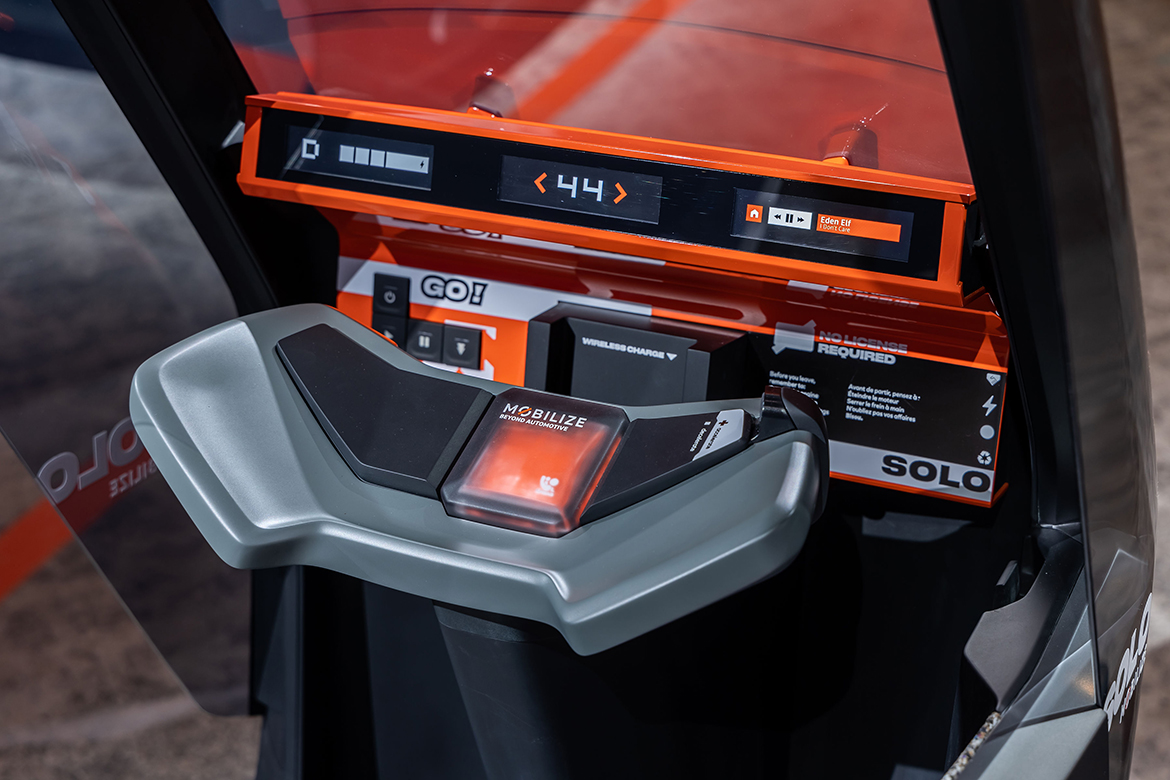Mobilize, the Renault Group’s company dedicated to the mobility of the future, will bring two new concepts to the Paris Motor Show (17-23 October 2022): Solo and Ileo. Solo Concept illustrates Mobilize’s desire to work on all forms of mobility. Solo Concept is a one-seater vehicle with a minimal external footprint (1.37 m long, 0.9 wide and 1.75 high). It embodies values of super-light, fluid and agile mobility. The project was initiated by the Renault style centre based in India. The initial idea of the designers was to design a skateboard equipped with an umbrella to shelter from the rain. With the Solo Concept, the body and the object become one, like a dress that is worn and the driver moves in a semi-sitting position, with a relaxed posture.
Solo Concept circulates at low speeds of up to 25 km/h, is driven without a licence, without a seatbelt or helmet, with a joystick as a steering wheel, a detail that recalls the world of video games. The wrap-around body, the airbag and the emergency button to be pressed with the foot to stop the vehicle in the event of danger guarantee a good level of safety. The vehicle thus offers a better level of protection than scooters, self-balancing scooters and other NVEIs (new individual electric vehicles) in the event of an accident. Solo Concept is equipped with three wheels: two drive wheels at the front and a smaller steering wheel at the rear. “Solo Concept offers a pleasant and functional design. It is designed to take up minimum space in the city while offering maximum safety and protection in the event of bad weather,” explained Patrick Lecharpy, head of design at Mobilize.
Designed together by Mobilize and Patrick Jouin iD, the Ileo Concept offers various services, including charging points. Nomadic and sustainable, the infrastructural elements fit into our territories, contribute to creating a capillary network and promote the accessibility of electric transport for all. With the Ileo Concept, Mobilize presents a future vision of public spaces dedicated to mobility. As a result, three conceptual elements of street furniture were developed: a fast-charging station (DC 22 kW) for electric vehicles, a micro-mobility station equipped with a stand for attaching bicycles and electric scooters with standard type sockets, and a space with a seat, table and screen support.












